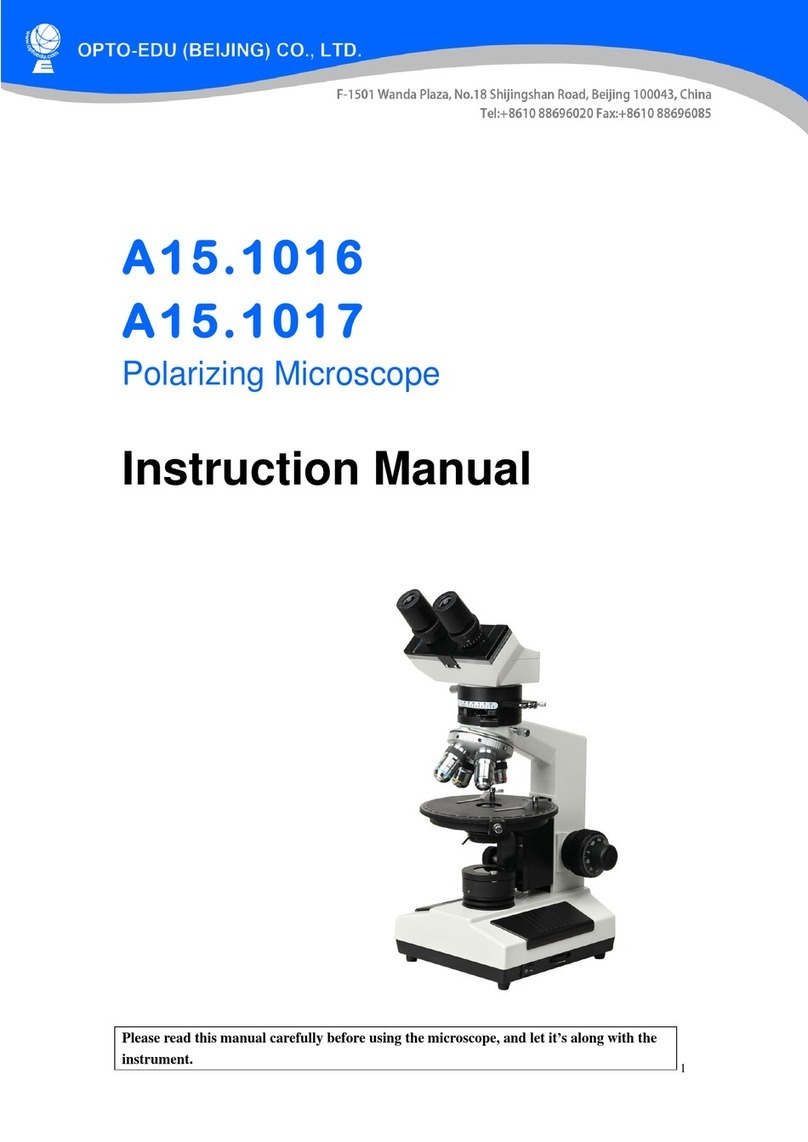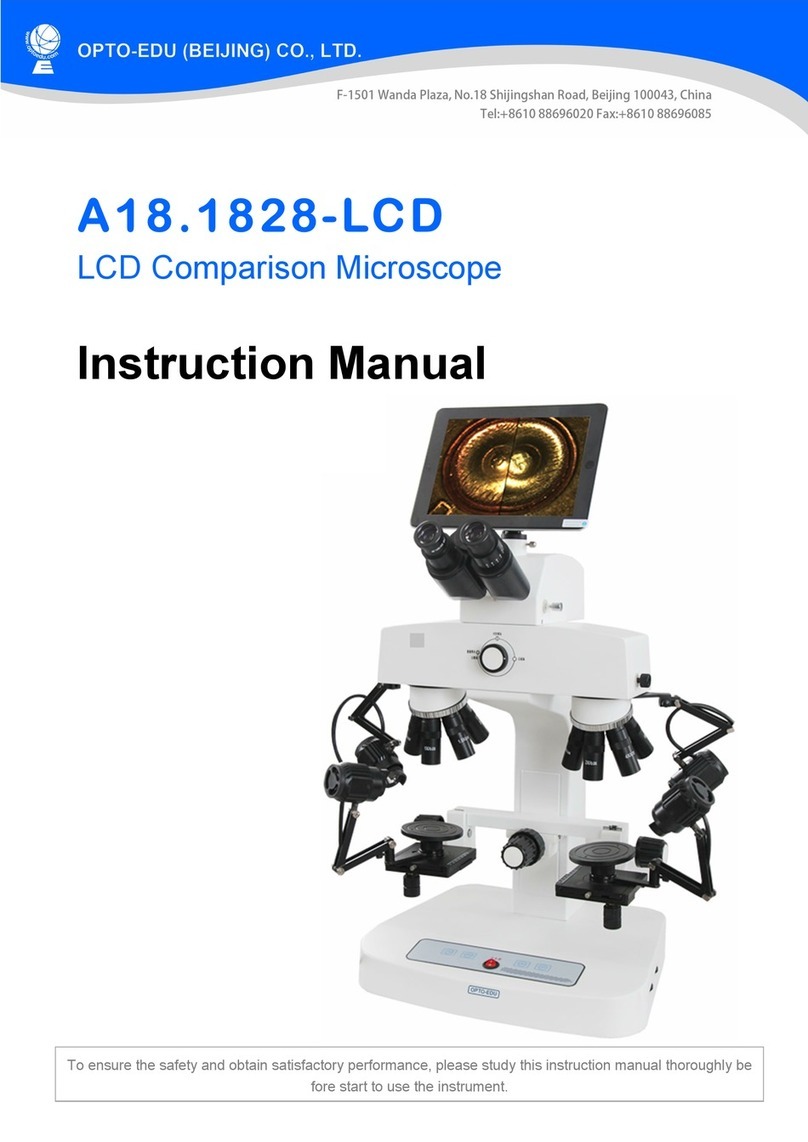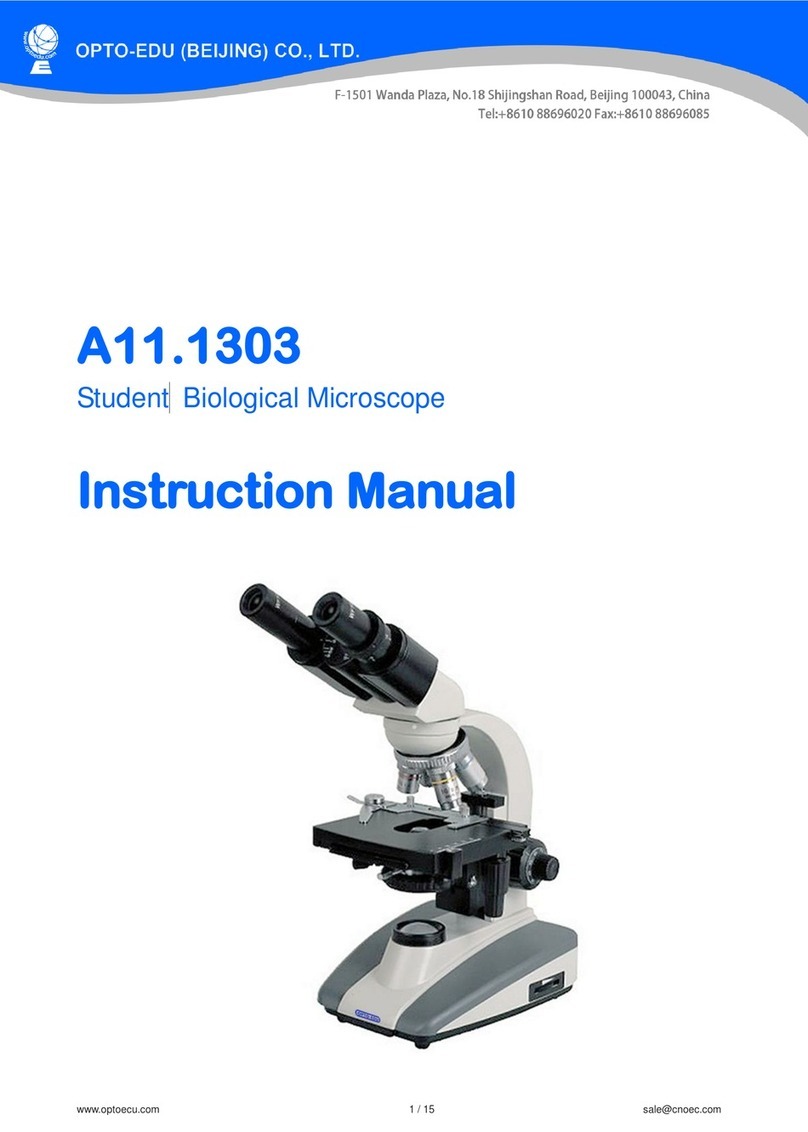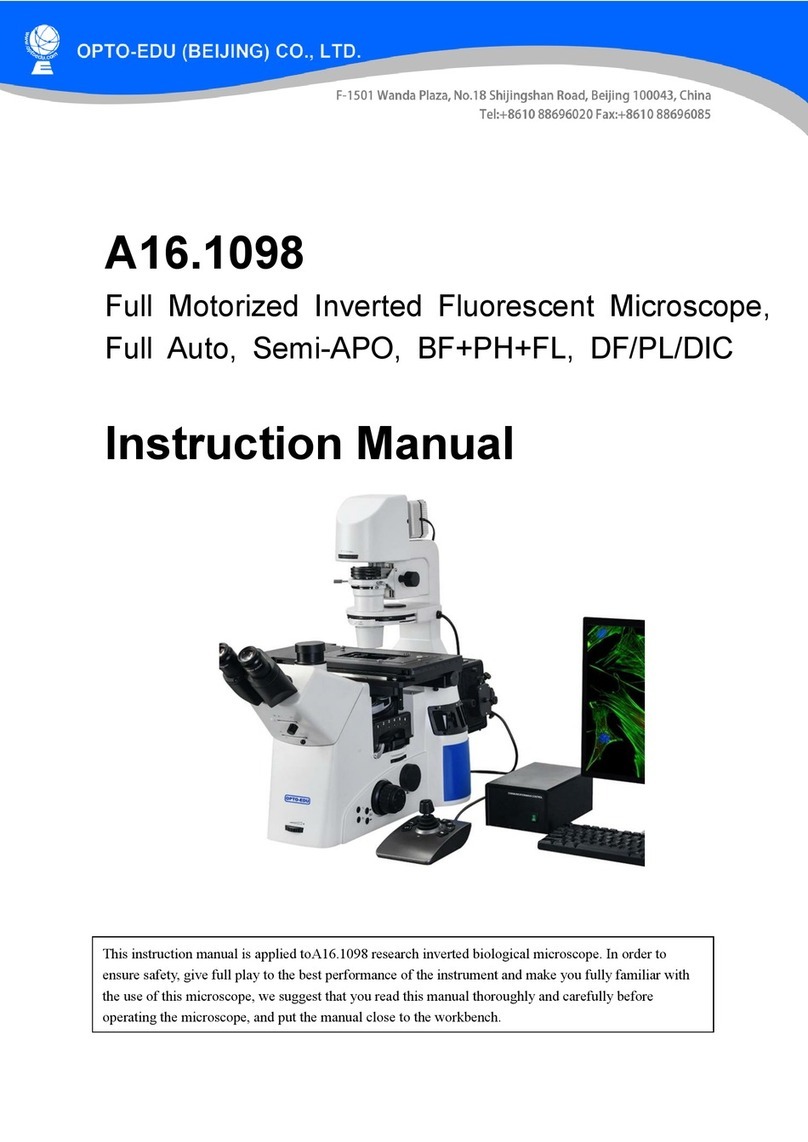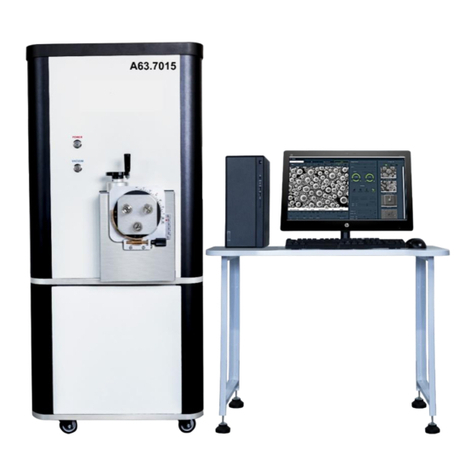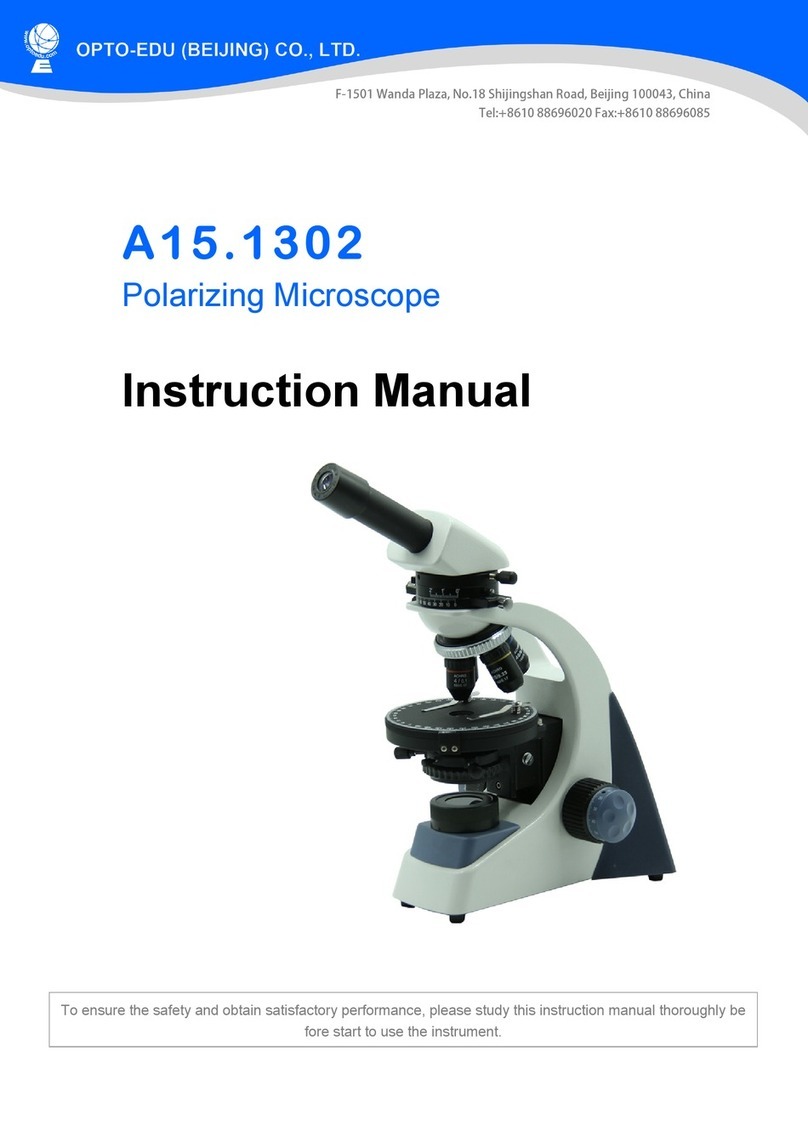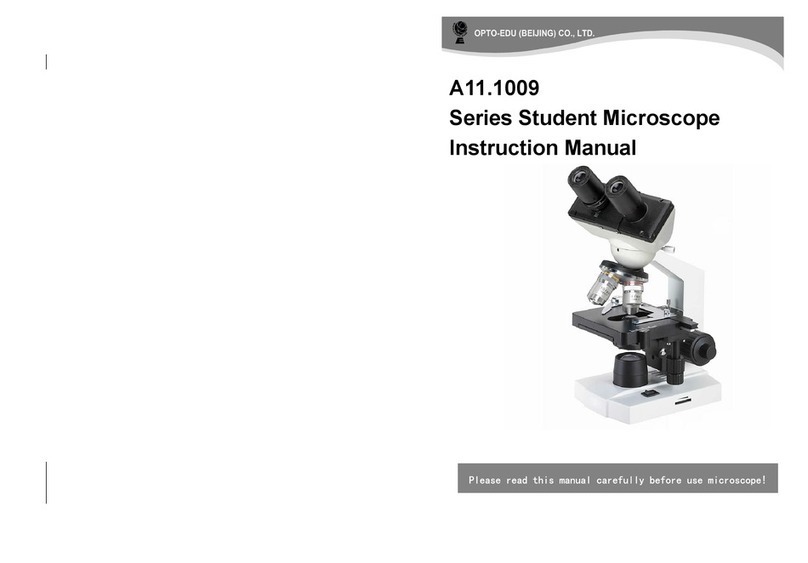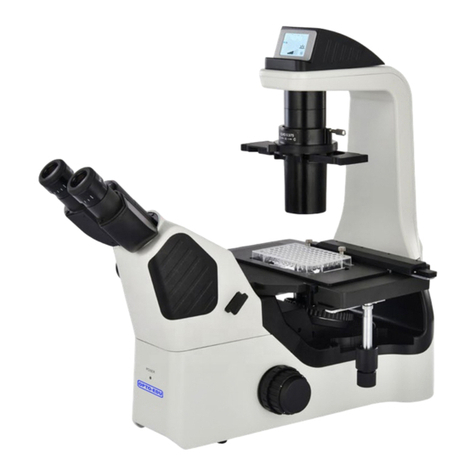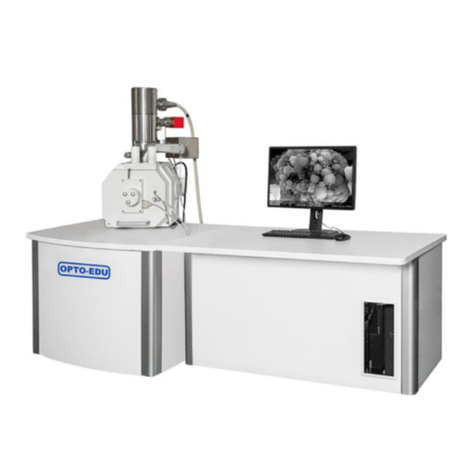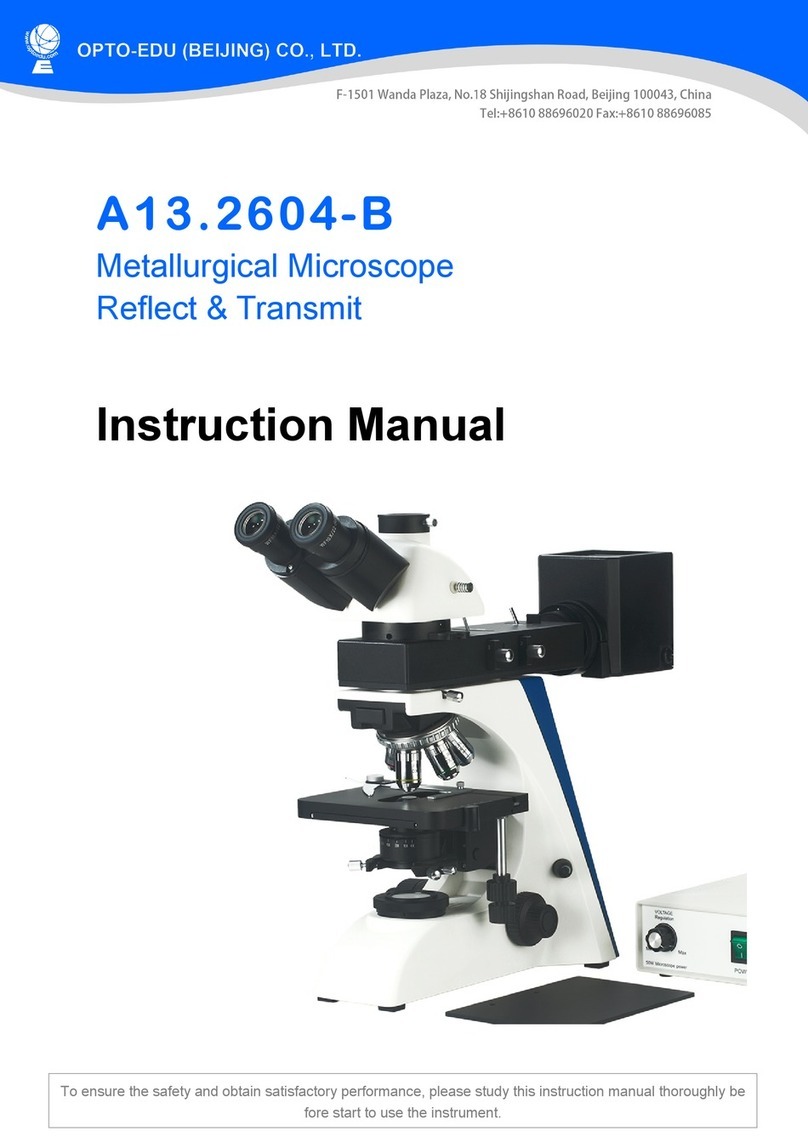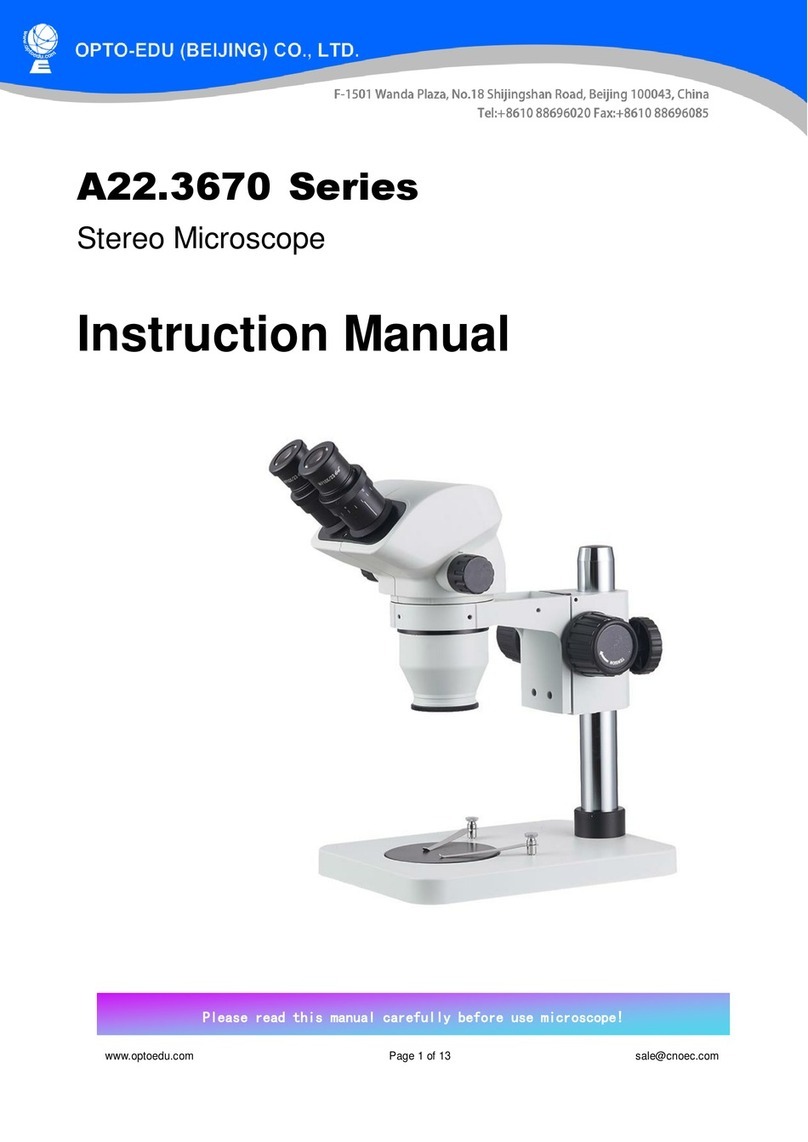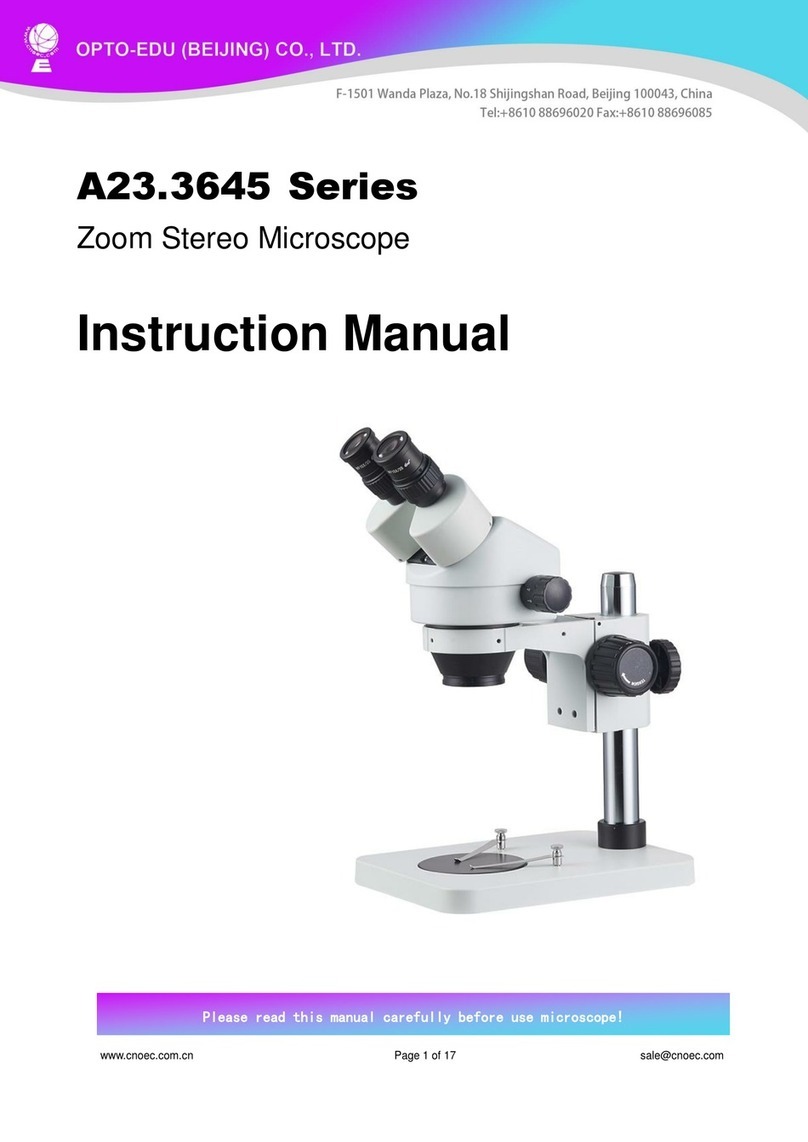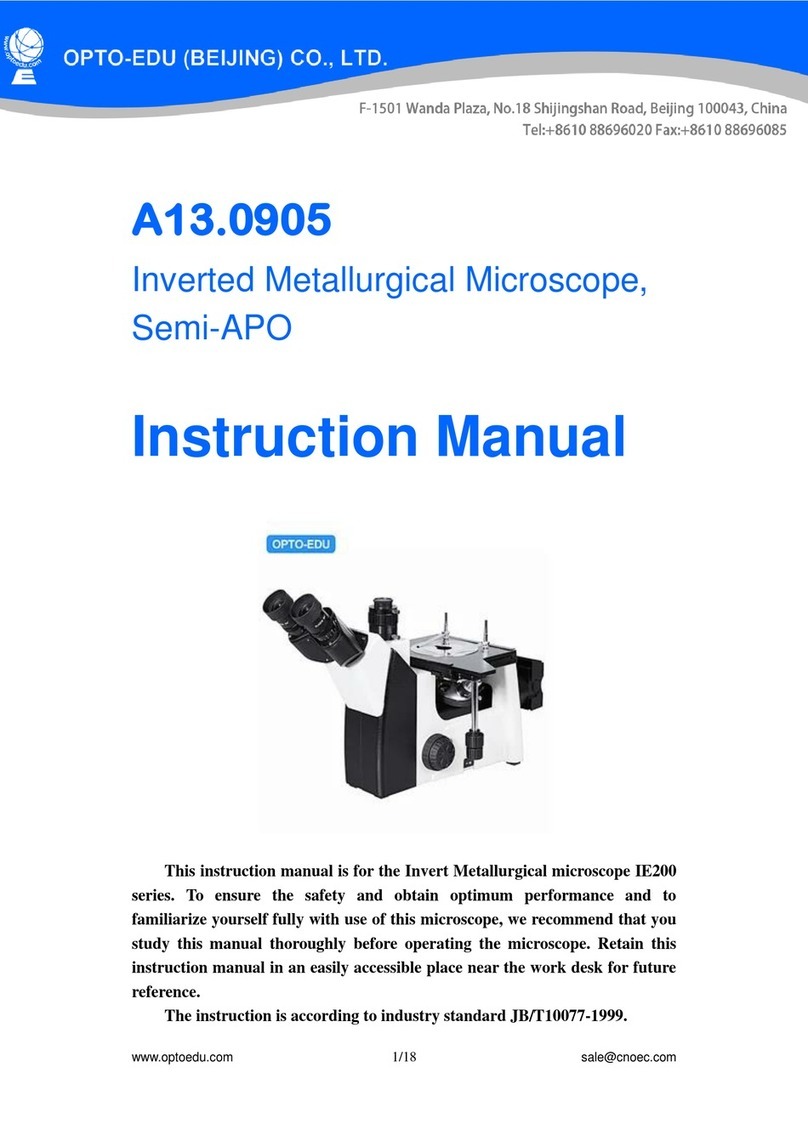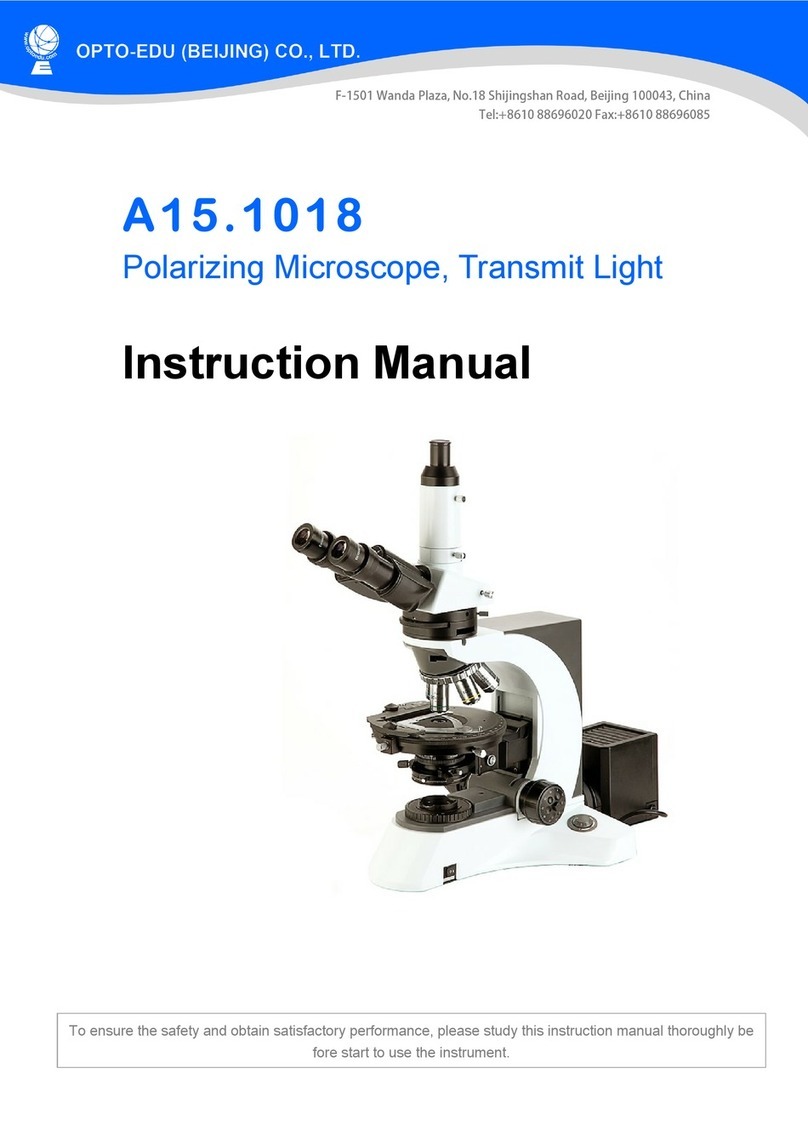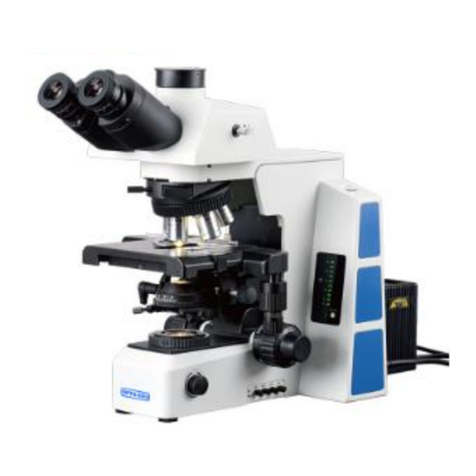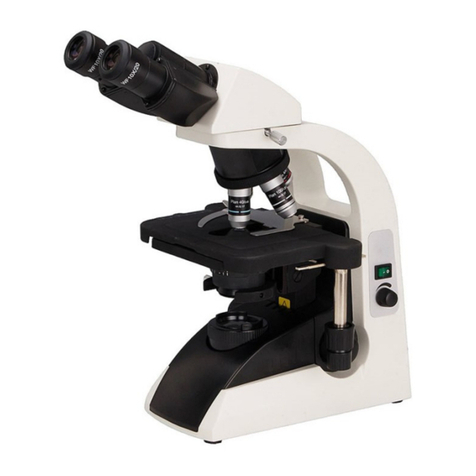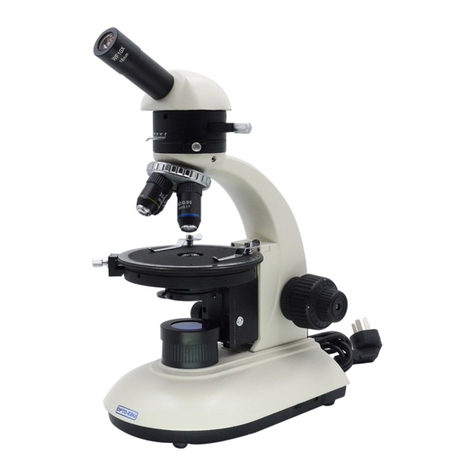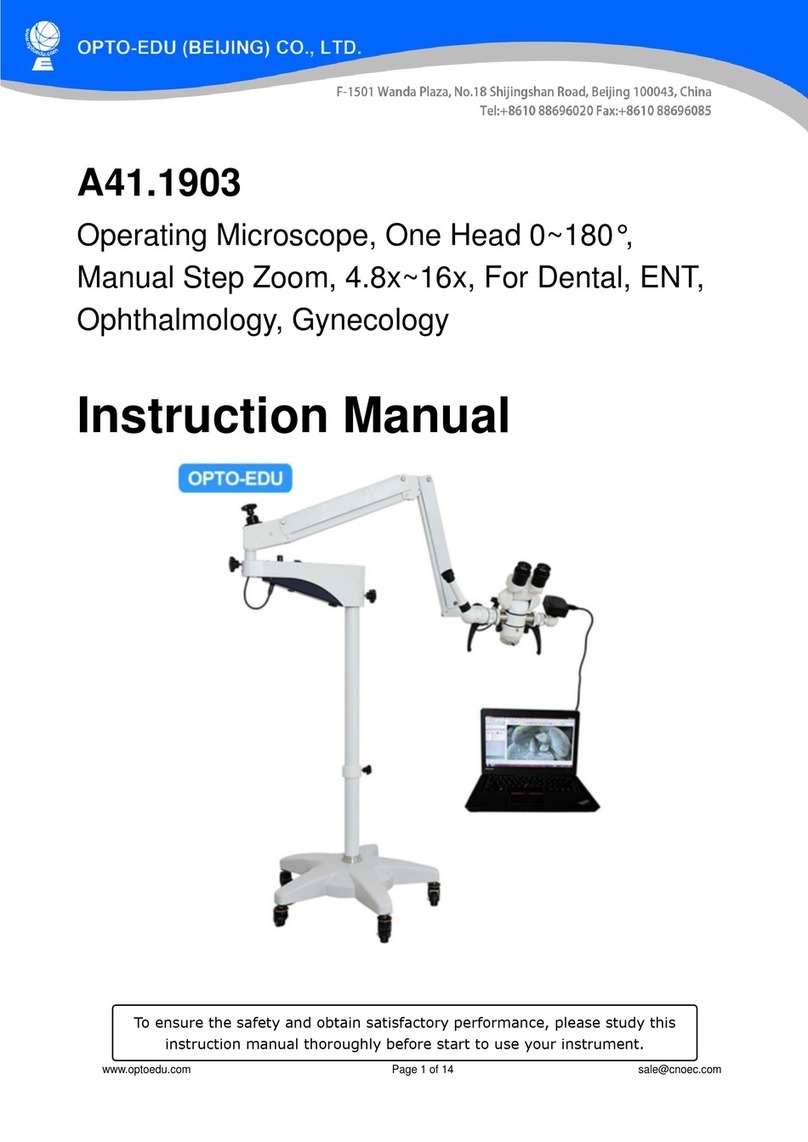www.optoedu.com 5/33 sale@cnoec.com
A15.1091
Ⅲ.Maintenance and maintenance
1. All lenses are tuned and do not disassemble themselves.
2. Objective converter and coarse micro-focusing mechanism, the structure is precise, please do
not easily disassemble.
3. The instrument should be kept clean, dust removed every day, clean should pay special
attention not to contaminate optics, objective lenses every other month to ask professionals to
clean.
4. Smudges on the lens, such as fingerprints and grease, can be wiped with a small amount of
ether (70%) and alcohol (30%) mixed solution on the lens paper.
Solvents such as ether and alcohol are highly flammable, do not carry out a variety of
electrical equipment power switch operation, at the same time can not approach the
open fire, please ensure indoor ventilation.
5. Do not use organic solvents to wipe non-optics of the microscope, if cleaning, use a neutral
detergent.
6. When using, if the microscope is wet with liquid, cut off the power supply immediately and
dry it.
7. Never disassemble any part of the microscope, which can affect the function of the
microscope or reduce the performance of the microscope.
8. The instrument should be placed in a cool, dry place, when the microscope is not used, the
use of a dust cover. Be sure to wait for the light chamber to cool down before the cover is on.
9. The environmental requirements for the use of microscopes:
a)Indoor use;
b)Ambient temperature range:10℃~35℃;
c)Maximum relative humidity: 80% when the temperature reaches 31℃,70% When the
temperature is reduced linearly to 34℃,60% the temperature reaches 37℃,5 0%When the
temperature reaches 40℃.
10. Microscope storage and transport environment requirements:
a)Ambient temperature range:-40℃~+70℃
b) Relative humidity range:10% to 100%.
c) Air pressure range:500hpa-1060hp
Warning:
Failure to operate the microscope in the manner specified in this manual may
compromise the safety of the user. In addition, the microscope may be damaged. The
microscope should always be operated in accordance with this instruction.
◎This microscope does not cause radiation, electromagnetic interference, etc. To
the surrounding environment, in accordance with UL certification standards.

